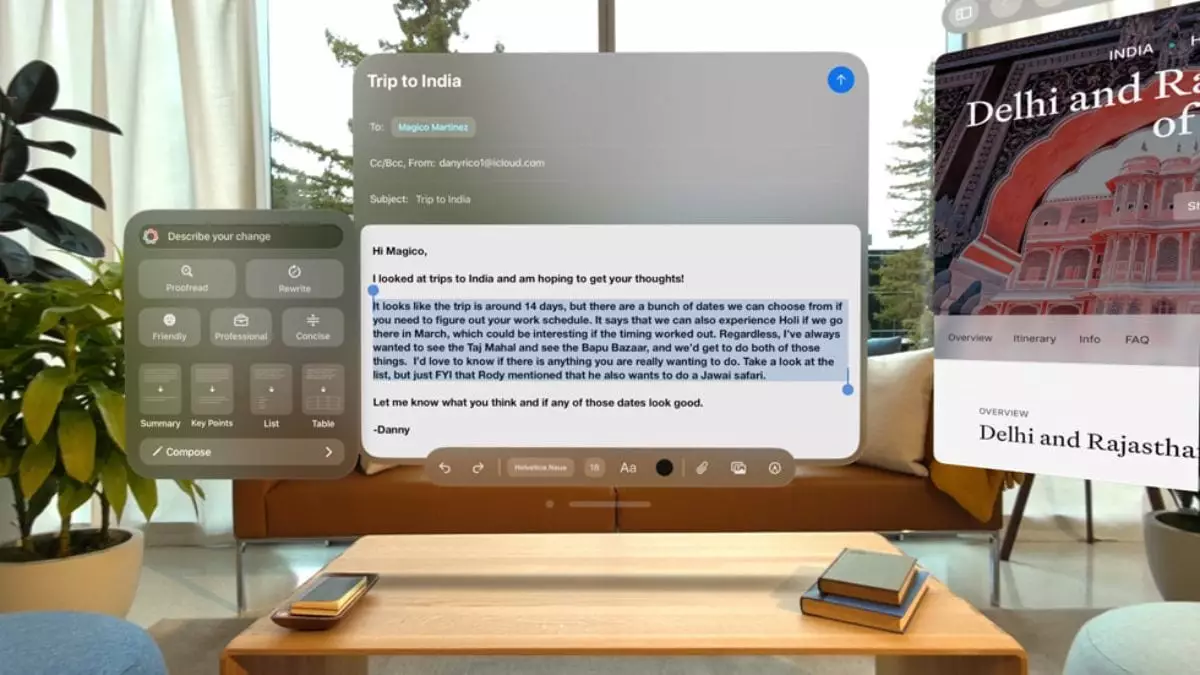The tech landscape is ever-evolving, and Apple often finds itself at the center of this tumultuous whirlpool. With the recent launch of the visionOS 2.4 update for the Apple Vision Pro, one has to ponder whether this represents a pivotal advancement or simply an overhyped reiteration of existing features under the guise of innovation. Billed as a major update, the introduction of Apple Intelligence functionalities into the mixed reality domain invites both excitement and skepticism.
AI Features: A Double-Edged Sword
Among the most notable features introduced is the Writing Tools, powered by artificial intelligence. It promises capabilities such as text summarization, rewriting, and even proofreading. While these functionalities sound beneficial, they raise pertinent questions regarding the reliance on machines for tasks traditionally performed by humans. Is there a risk of becoming overly dependent on technology for tasks that demand critical thinking and creativity? The notion of AI crafting lists or highlighting key points provokes intrigue but also detracts from the essence of human judgment and nuance in communication.
Similarly, the Image Playground’s generative AI promises to transform photos based on user prompts. While the concept is undoubtedly fascinating, it begs the question of authenticity in visual storytelling. Will users find their creative expression stifled by algorithms dictating aesthetics? The introduction of Genmoji also poses an interesting quandary—we must consider whether these playful extensions of communication enhance our interactions or dilute the depth of personal connection.
Privacy Concerns Amidst Convenience
Apple’s unwavering commitment to user privacy remains a cornerstone of the company’s narrative. The fact that photos and videos utilized for the creation of memory movies are kept private and handled with care is commendable. However, this assurance is overshadowed by the complexities of Apple’s AI-driven model. While on-device processing seems reassuring, it prompts us to ask how often such processing is realistic for users with limited device capabilities. With larger functions requiring cloud support, can Apple genuinely state that users’ data remains untouched?
Such considerations highlight the paradox of technological advancement: the more convenience we seek, the more we need to introspect about our data sharing agreements and privacy settings.
Is This the Future of Communication?
The introduction of Smart Reply in Mail and Messages, along with features like Priority Messages and Notification Summaries, suggests that Apple aims to streamline communication. Yet, one must wonder if we are edging toward an era where human interaction is reduced to quick automated responses. Are we genuinely enhancing our ability to connect, or simply bandaging social interaction with tech-induced speed?
In essence, visionOS 2.4 is more than just an update; it’s a reflection of our current societal quandaries. It lures us with promises of progress, yet nudges us to confront uncomfortable truths about dependency, creativity, and the very essence of human connection. As we step into this new mixed reality, we need to ask ourselves: are we innovating, or are we merely regressing?



Leave a Reply